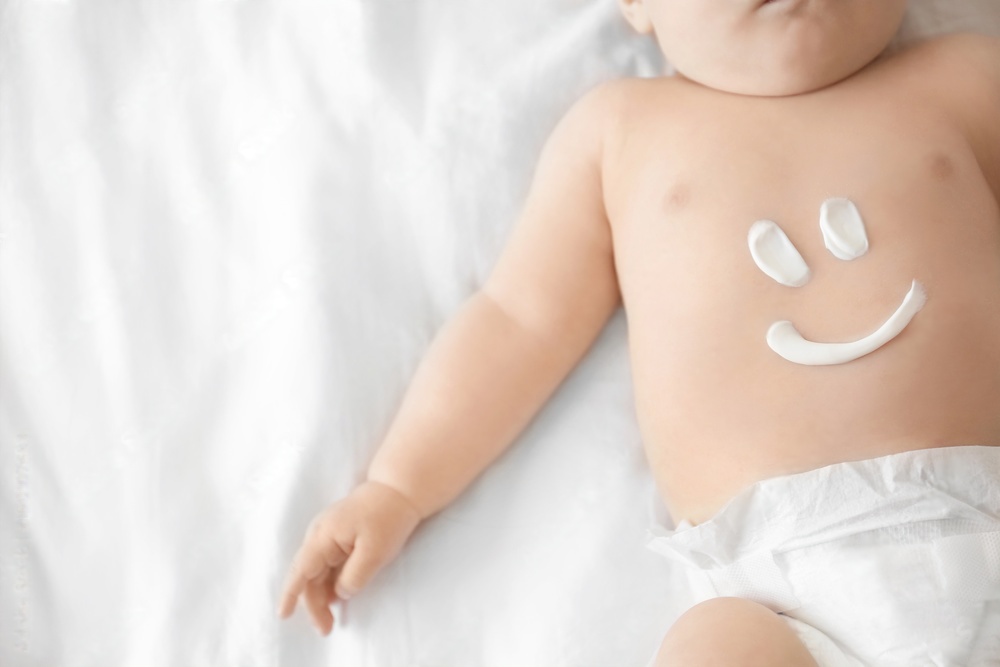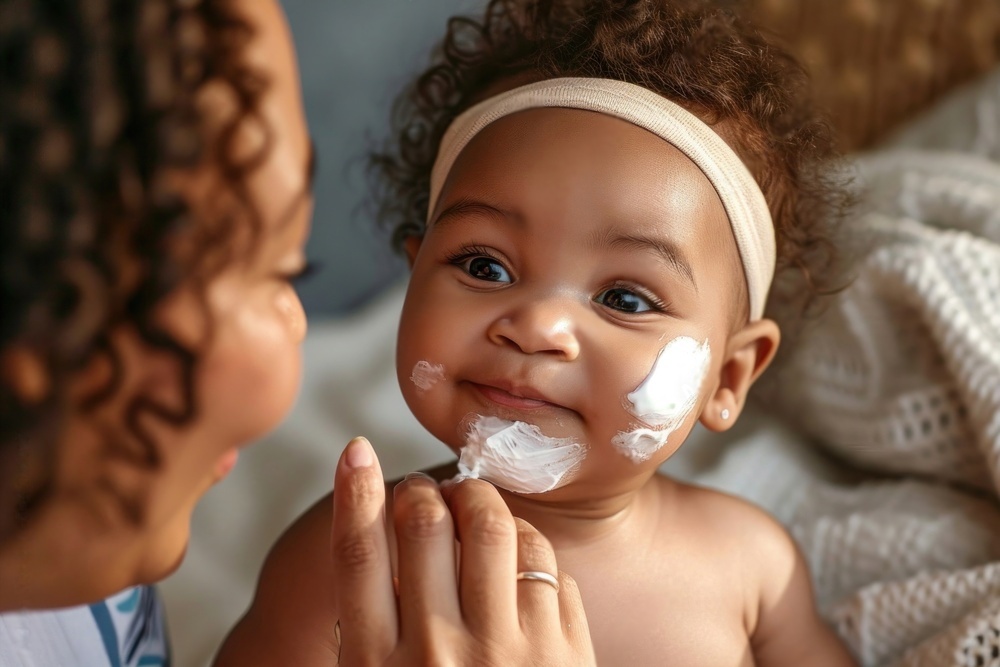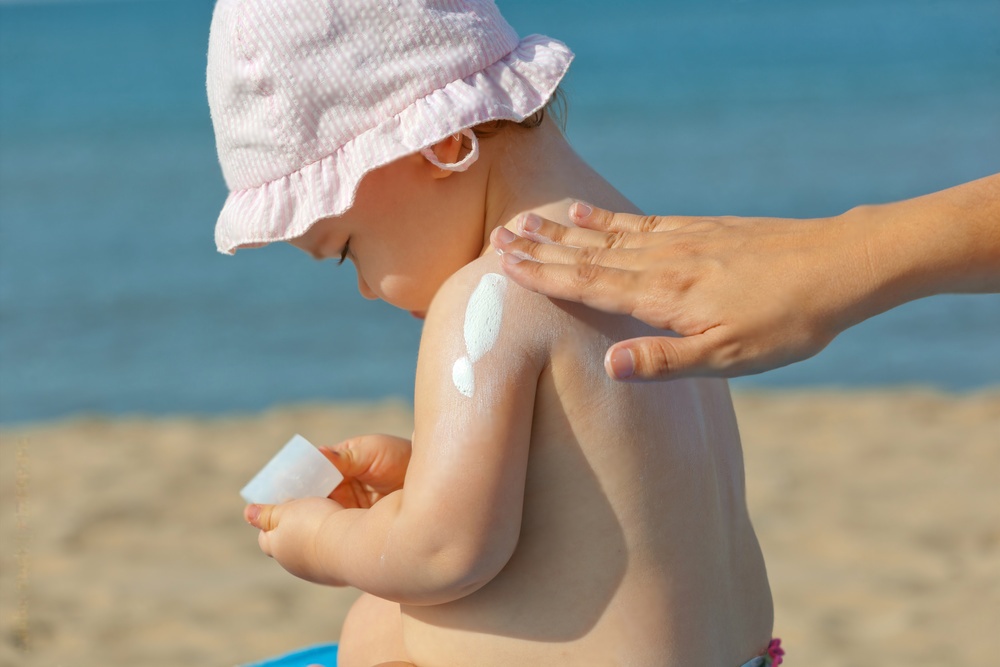Hello there! Welcome to our blog. We know that as parents, you want nothing but the best for your little ones. And when it comes to taking care of your baby’s delicate skin, we understand that you may have some concerns and questions. That’s why we’re here to help! In this post, we’ll be discussing the importance of keeping your baby’s skincare routine simple and safe. We’ll delve into the world of infant hygiene products and provide you with some valuable tips and advice on making the right choices for your little bundle of joy. So, let’s get started on this journey of ensuring your baby’s skin stays healthy and happy!
Why simplicity is key for baby skincare routine
Taking care of your baby’s delicate skin is of utmost importance. As a parent, you want to make sure that your little one’s skin remains soft, healthy, and free from any irritations or allergies. That’s why simplicity is key when it comes to your baby’s skincare routine. By keeping it simple, you can minimize the risk of potential irritations and allergies, ensuring that your baby’s skin stays happy and healthy. Let’s dive into the importance of simplicity in a baby skincare routine.
Gentle is best
When it comes to choosing skincare products for your baby, it’s important to opt for gentle and mild options. Babies have sensitive skin that is more susceptible to irritation and allergies. By using products with fewer ingredients and no harsh chemicals, you can minimize the risk of any adverse reactions. Look for products that are specifically formulated for babies, such as gentle cleansers and moisturizers that are free from fragrances, dyes, and parabens.
Avoid unnecessary complexity
In today’s market, there is an overwhelming number of baby skincare products available, each promising different benefits and features. However, it’s important to remember that your baby’s skin is delicate and doesn’t require a complex skincare routine. By keeping it simple, you can avoid overwhelming your baby’s skin with unnecessary products. Stick to the essentials: a gentle cleanser, a moisturizer, and a diaper cream. This minimalist approach allows your baby’s skin to breathe and maintain its natural balance.
Minimize the risk of irritations and allergies
By keeping your baby’s skincare routine simple, you can significantly reduce the risk of irritations and allergies. The fewer products you use, the easier it is to identify any potential triggers. Complex routines with multiple products increase the chances of a reaction, making it difficult to pinpoint the cause. By sticking to a minimalistic approach, you can quickly identify if a particular product is causing any issues and eliminate it from your routine. This simplification can save you time, money, and most importantly, keep your baby’s skin healthy.
Choosing the right products
When selecting products for your baby’s skincare routine, it’s essential to read labels and understand what ingredients are present. Look for products that are hypoallergenic, fragrance-free, and dermatologist-tested. Here are some key points to consider:
- Ingredients: Opt for products with minimal ingredients and avoid those with potential irritants such as fragrances, dyes, or parabens.
- Texture: Choose products with a lightweight and non-greasy texture that are easily absorbed into your baby’s skin.
- Packaging: Look for products that come in hygienic packaging to avoid contamination and maintain product freshness.
- Reviews: Read reviews from other parents to get an idea of the experiences they’ve had with particular products.
Simplify, but don’t compromise
While simplicity is key, it’s important to remember that not all baby skincare products are created equal. Simplifying your baby’s skincare routine doesn’t mean compromising on quality or effectiveness. There are excellent brands out there that offer simple and safe options for your baby’s delicate skin. Do your research, seek recommendations from other parents, and find the right products that strike the balance between simplicity and effectiveness.
In conclusion, keeping your baby’s skincare routine simple is essential for maintaining healthy, happy skin. By opting for gentle products, avoiding unnecessary complexity, and minimizing the risk of irritations and allergies, you can ensure that your baby’s skin remains soft and nourished. Remember to choose the right products by considering ingredients, texture, packaging, and reading reviews. Simple doesn’t mean compromising on quality, so find the perfect balance to keep your baby’s skin glowing.
Essential tips for a safe baby skincare routine
As a parent, you want the best for your baby, especially when it comes to their delicate skin. Establishing a safe and effective skincare routine is crucial to keep your little one’s skin healthy and protected. In this blog post, we’ll provide you with essential tips on choosing gentle and natural products, avoiding harsh chemicals, and performing patch tests for your baby’s skincare routine.
Choosing Gentle and Natural Products
When it comes to your baby’s skincare, it’s important to opt for gentle and natural products that are specifically formulated for their sensitive skin. Here are some practical tips to help you make the right choices:
- Look for Hypoallergenic Formulas: Hypoallergenic products are designed to minimize the risk of allergic reactions, making them ideal for babies with sensitive skin. Brands like Cetaphil Baby, Mustela, and Aveeno Baby offer a wide range of hypoallergenic options.
- Avoid Fragrances and Artificial Colors: Babies’ skin is more susceptible to irritation caused by fragrances and artificial colors. Opt for fragrance-free and dye-free products, like those from Burt’s Bees Baby, California Baby, and Babyganics.
- Check for Organic and Natural Ingredients: Organic and natural ingredients are gentle on your baby’s skin and minimize exposure to potentially harmful chemicals. Look for brands like Earth Mama, Weleda Baby, and The Honest Company, which prioritize organic and natural formulations.
- Consider Allergies and Sensitivities: If your baby has known allergies or sensitivities, consult with their pediatrician or a dermatologist to identify potential triggers and select suitable products accordingly.
Avoiding Harsh Chemicals
Harsh chemicals can be harmful to your baby’s delicate skin and may cause irritation or other adverse reactions. It’s essential to be aware of the ingredients in your baby’s skincare products and avoid those that can be potentially harmful. Here’s what you should watch out for:
- Sulfates: Sulfates, such as Sodium Lauryl Sulfate (SLS) and Sodium Laureth Sulfate (SLES), are commonly found in many personal care products and can strip the skin of natural oils. Choose sulfate-free options, like those from Baby Dove, Babo Botanicals, and CeraVe Baby.
- Parabens: Parabens are preservatives that can disrupt the body’s hormonal balance. Opt for paraben-free products, such as those offered by Puracy, Baby Bum, and Aquaphor Baby.
- Phthalates: Phthalates are often used to enhance fragrance in skincare products but can be harmful. Look for phthalate-free alternatives, including those from Noodle & Boo, Baby Mantra, and Eucerin Baby.
- Mineral Oil: Mineral oil is a petroleum byproduct that can clog pores and hinder the skin’s natural functions. Choose products without mineral oil, like those by Babyganics, Cetaphil Baby, or The Mom’s Co..
Performing Patch Tests
Before introducing a new skincare product to your baby’s routine, it’s essential to perform a patch test to check for any potential reactions. Here’s how to do it:
- Choose a Small Area: Select a small and inconspicuous area of your baby’s skin, such as the inside of their wrist or behind the ear.
- Apply a Small Amount: Apply a small amount of the product to the chosen area and gently rub it in.
- Observe for Reactions: Keep an eye on the patch test area for at least 24 hours. If any redness, rash, or irritation occurs, discontinue use of the product and consult with a healthcare professional.
Performing patch tests allows you to identify any potential allergens or irritants before applying a product to your baby’s entire body, ensuring their safety and well-being.
Creating a basic baby skincare routine
As a parent, taking care of your baby’s delicate skin is essential. Establishing a basic skincare routine can help keep their skin healthy and protected. In this blog post, we will outline the key steps to creating a basic baby skincare routine, including gentle cleansing, moisturizing, and sun protection.
Step 1: Gentle Cleansing
Babies have sensitive skin that requires gentle cleansing. Here are a few tips to keep in mind when choosing a cleanser for your little one:
- Opt for mild, fragrance-free cleansers specifically formulated for babies. Look for products that are labeled as hypoallergenic and dermatologist-tested.
- Avoid harsh chemicals such as sulfates, parabens, and artificial fragrances, as these can irritate the baby’s skin.
- Test the cleanser on a small area of your baby’s skin before using it all over to ensure there is no adverse reaction.
- Use lukewarm water and a soft washcloth to gently cleanse your baby’s skin. Avoid scrubbing too vigorously, as this can cause irritation.
Step 2: Moisturizing
Moisturizing is crucial to keep your baby’s skin hydrated and protected. Here’s what you need to know about moisturizers for your little one:
- Look for hypoallergenic, fragrance-free moisturizers specifically designed for babies. These are usually gentle and less likely to cause irritation.
- Choose moisturizers that contain ingredients like glycerin, shea butter, or coconut oil, as these help lock in moisture and provide hydration.
- Apply the moisturizer to your baby’s skin after bath time or whenever their skin feels dry. Gently massage it in using circular motions until fully absorbed.
- Pay extra attention to areas prone to dryness, such as the elbows, knees, and cheeks.
Step 3: Sun Protection
Protecting your baby’s delicate skin from the sun’s harmful rays is crucial, even on cloudy days. Here’s how you can ensure their skin stays safe:
- Keep your baby out of direct sunlight, especially between 10 a.m. and 4 p.m., when the sun’s rays are the strongest.
- Dress your baby in lightweight, loose-fitting clothing that covers their arms and legs. Opt for wide-brimmed hats to protect their face and neck.
- Apply a broad-spectrum sunscreen with an SPF of 30 or higher to your baby’s exposed skin. Look for sunscreens specifically formulated for babies, as they tend to be gentler.
- Remember to reapply sunscreen every two hours, or more frequently if your baby has been sweating or in water.
Common pitfalls to avoid
As a parent, it’s only natural that you want the best for your child, including their skincare routine. However, when it comes to choosing the right products, there are some common pitfalls that many parents fall into. By being aware of these mistakes and avoiding them, you can ensure that your child’s skin stays healthy, nourished, and free from any potential harm. Let’s take a closer look at some of the most common pitfalls to avoid when selecting skincare products for your little one.
Pitfall 1: Overusing Products
One of the biggest mistakes parents make is overusing skincare products on their child’s delicate skin. While it’s important to keep their skin clean and moisturized, excessive use of products can actually do more harm than good. Overusing cleansers and moisturizers can strip away the natural oils that protect the skin, leading to dryness, irritation, and even more serious issues like eczema.
To avoid this pitfall, remember the following tips:
- Use a gentle cleanser specifically formulated for children, and only use it once a day unless your child gets particularly dirty or sweaty.
- When applying moisturizer, use a small amount and focus on areas that tend to get dry, like the cheeks and elbows.
- If your child has a specific skin condition, consult a dermatologist for guidance on appropriate product usage.
Pitfall 2: Using Adult Skincare Products
Another common mistake parents make is using their own skincare products on their child’s skin. While it may seem convenient or cost-effective, adult skincare products are not designed for the unique needs of a child’s delicate skin. Adult products often contain harsh ingredients or higher concentrations of active ingredients that can be too intense for a child’s skin, leading to irritation and other adverse reactions.
To avoid this pitfall, opt for specially formulated skincare products for children, which are milder and better suited to their needs. Look for labels that clearly state they are intended for children or babies, and always read the ingredients list to ensure there are no potentially harmful substances.
Pitfall 3: Neglecting to Read Labels
When it comes to skincare products, reading the labels is crucial. Unfortunately, many parents overlook this important step, assuming that all products on the market are safe for their child. However, this is not always the case. Some skincare products may contain allergens, irritants, or other harmful ingredients that can cause adverse reactions in sensitive skin.
To avoid this pitfall, make it a habit to read the labels of skincare products before purchasing or using them on your child. Look for products that are free from common allergens like fragrances, parabens, sulfates, and phthalates. Additionally, be aware of any specific ingredients that your child may be allergic to and avoid products that contain them.
Comparison Table: Children’s Skincare Products
Here’s a quick comparison table of some popular children’s skincare brands and their key features:
Remember, every child’s skin is unique, so what works for one child may not work for another. It’s always a good idea to do a patch test on a small area of your child’s skin before introducing a new product to check for any adverse reactions.
By avoiding these common pitfalls and making informed choices, you can ensure that your child’s skincare routine is safe, effective, and beneficial for their skin health. Remember, when it comes to your child’s skin, it’s better to be cautious and choose wisely.
Wrap-Up: Expert Tips for Easy and Safe Baby Skincare
In conclusion, we have discussed the importance of keeping your baby’s skincare routine simple and safe. We have emphasized the need to prioritize gentle and natural products, avoiding harsh chemicals and fragrances that can irritate their delicate skin. We have also highlighted the significance of regular moisturizing and protection from the sun. By following these guidelines, parents can ensure that their baby’s skin remains healthy and well-nourished. Remember, simplicity and safety should always be at the forefront when it comes to caring for your little one’s precious skin.







